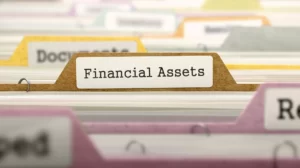While it can be a risky endeavor, investing is a crucial component of building wealth. The link between risk reward is a cornerstone of investing, but it’s crucial to realize that increased risk does not always equate to higher rewards.
This post will cover the various investment types, the relationship between risk and return, and how to balance risk and return in your portfolio.
In a Nutshell
- Risk reward are positively correlated, although increased risk does not always equate to larger returns.
- From low risk government bonds to high risk equity investments and futures contracts, investments can be thought of on a risk spectrum.
- Statistical methods are used in modern portfolio theory to identify an efficient frontier that optimizes return while minimizing risk.
- The risk return relationship is a crucial factor in portfolio appraisal and investment decision making.
- Investors‘ risk appetites differ from one another and are influenced by things like time horizon, portfolio size, and other assets.
- You may manage the risk and return of your portfolio using formulas and tactics like Roy’s safety first strategy and the Sharpe ratio.
Risks and Investments
The risk associated with investments can be considered on a spectrum. At the low risk end are short term government bonds with low yields. In the middle of the spectrum may be investments such as real estate leases or high yield debt. At the high risk end are equity investments and futures and commodity contracts, including options.
Risk and return are like two sides of a seesaw. You can’t have one without the other.
Mohnish Pabrai
Investments with different levels of risk are often placed together in a portfolio to maximize returns while minimizing the possibility of volatility and losses. Modern portfolio theory (MPT) uses statistical techniques to determine an efficient frontier that results in the lowest risk for a given rate of return. Using the concepts of this theory, assets are combined into a portfolio based on statistical measures such as standard deviation and correlation.
The Risk Reward Ratio
The correlation between the risks involved in investing and the return on investment is known as the risk reward relationship. According to this principle, the greater the risk, the greater the reward, and vice versa.
According to this principle, low levels of uncertainty (risk) are associated with low potential returns and high levels of uncertainty with high potential returns. According to this principle, money invested can only generate higher returns if the investor accepts a higher possibility of losses.
Investors consider the risk reward ratio as one of the essential components of their decision making. They also use it to evaluate their portfolios as a whole.
Risk Tolerance
An investor must know his individual risk tolerance when constructing a portfolio of assets. Risk tolerance varies from one investor to another. Factors that influence risk tolerance may include:
- the amount of time remaining until retirement
- the size of the portfolio
- the future earnings potential
- the ability to replace lost funds
- the presence of other types of assets: equity in a home, a pension plan, an insurance policy
Risk Reward Management
Formulas, strategies and algorithms dedicated to analyzing and attempting to quantify the relationship between risk and return abound.
Roy’s safety first criterion, also known as the SFRatio, is an approach to investment decisions that establishes a minimum required return for a given level of risk. Its formula provides a probability of earning a minimum required return on a portfolio; an investor’s optimal decision is to choose the portfolio with the highest SFRatio.
Another popular measure is the Sharpe ratio. This calculation compares the performance of an asset, fund or portfolio to the performance of a risk free investment, typically the three month U.S. Treasury bond. The higher the Sharpe ratio, the better the risk adjusted return.
Wrap Up
In conclusion, successful investing depends on a knowledge of the risk reward relationship. You can enhance your potential for long term wealth creation by diversifying your portfolio and controlling risk and return.
FAQs

Riskier investments have the potential to yield bigger returns because there is a positive link between risk and return. There is no assurance that greater risk will always result in greater rewards, though.
A risk spectrum can be used to categorize investments, with low risk options including short term government bonds, medium risk options including high yield loans or real estate leases, and high risk options include equity investments, futures and commodities contracts.
The correlation between the risks associated with an investment and the return on that investment is known as the risk reward ratio. This idea states that the bigger the risk, the larger the return, and the reverse is also true.
The amount of time an investor has till retirement, the size of their portfolio, their possible future earnings, their capacity to replace lost assets, and the presence of other asset classes are some examples of variables that can affect risk tolerance.
A number of formulas, methods, and algorithms can be used to analyze and quantify how risk and return in investments relate to one another. The Sharpe ratio and Roy’s safety criterion are two examples. When building an asset portfolio, investors should also take into account their unique risk tolerance.
Article sources
At Capital Maniacs, we are committed to providing accurate and reliable information on a wide range of financial topics. In order to achieve this, we rely on the use of primary sources and corroborated secondary sources to support the content of our articles.
Primary sources, such as financial statements and government reports, provide firsthand evidence of financial events and trends. By using primary sources, we are able to directly reference information provided by the organizations and individuals involved in these events.
Secondary sources, such as financial analysis and commentary, interpret and analyze primary sources. While these sources can be useful for providing context and background information, it is important to use corroborated sources in order to ensure the accuracy and reliability of the information we present.
We take pride in properly citing all of our sources, both primary and secondary, in order to give credit to the original authors and to allow our readers to verify the information for themselves. We appreciate your trust in our website and are committed to upholding the highest standards of financial journalism.
- WallStreetMojo | The Risk Reward Tradeoff – What Is Risk Return Trade Off?
- The Economic Times – What is Risk Return Trade Off
- The Balance – What Is the Risk/Reward Ratio?




















